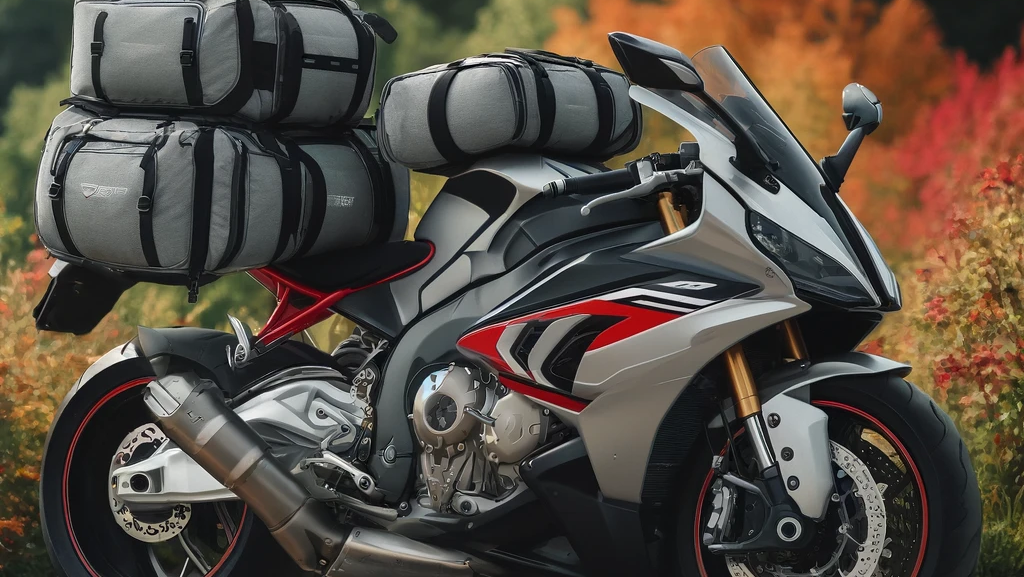When it comes to motorcycle trips, packing efficiently and safely is key. In this guide, we’ll dive into the best practices for fitting soft luggage on your motorcycle, ensuring your gear stays secure and your ride remains smooth. We’ll cover everything from selecting the right type of soft luggage to securely attaching it, so you can hit the road with confidence.
Introduction
Embarking on a motorcycle journey is an exhilarating experience. The open road, the wind in your face, and the freedom to explore new destinations all contribute to the allure. However, packing for such trips presents unique challenges. Unlike cars, motorcycles have limited storage space, making it essential to use the right luggage and secure it properly. In this article, we’ll explore how to fit soft luggage safely on your motorcycle, providing practical tips to enhance your riding experience.
Choosing the Right Soft Luggage
First things first, selecting the appropriate soft luggage is crucial. There are several options available, each catering to different needs and preferences. Here’s a quick rundown of the most popular types:
- Saddlebags: These are designed to hang over the rear seat or fender, offering ample space for longer trips.
- Tail Bags: Perfect for shorter trips, these bags sit on the tail section of your bike.
- Tank Bags: Convenient for storing items you need to access quickly, such as maps or snacks.
- Dry Bags: Ideal for protecting your belongings from the elements, especially during unpredictable weather conditions.
When choosing soft luggage, consider the size and shape of your motorcycle, your typical travel duration, and the type of items you plan to carry.
Packing Your Soft Luggage
Packing your luggage efficiently can make a huge difference in maintaining balance and stability on your bike. Follow these tips to ensure your load is optimized:
- Distribute Weight Evenly: Place heavier items at the bottom and distribute weight evenly on both sides to avoid unbalancing your bike.
- Use Compression Bags: These can help minimize the volume of your clothes and other soft items, allowing for more efficient use of space.
- Keep Essentials Accessible: Store frequently used items in easily accessible pockets or compartments, so you don’t have to unpack everything to reach them.
- Secure Fragile Items: Use padding to protect delicate items and ensure they’re stored securely to prevent damage during the ride.
Securing Your Soft Luggage
Properly securing your luggage is paramount for a safe ride. Here’s how you can do it effectively:
- Use High-Quality Straps and Bungee Cords: Invest in durable, high-quality straps and bungee cords to keep your luggage firmly in place.
- Check Mounting Points: Ensure your bike has strong and appropriate mounting points for attaching luggage. These might include the rear seat, foot pegs, or luggage racks.
- Tighten Everything Down: Make sure all straps are tightened securely, but avoid over-tightening as this can cause damage to the luggage or your bike.
- Double-Check Your Load: Before hitting the road, double-check that all your luggage is secure. Give each bag a gentle shake to ensure nothing moves.
Safety Considerations
Keeping safety in mind while fitting and securing your luggage is essential. Here are a few important considerations:
- Avoid Obstructing Lights and Indicators: Ensure your luggage doesn’t block your tail lights, brake lights, or indicators, which are crucial for safe riding.
- Maintain a Low Center of Gravity: Keep your heaviest items as low as possible to maintain a low center of gravity and improve bike stability.
- Regularly Check Your Load: During your ride, periodically stop to check that your luggage remains secure. Vibrations and movements can cause straps to loosen over time.
Additional Tips for a Smooth Ride
Beyond securing your luggage, here are some extra tips to ensure your ride goes off without a hitch:
- Use Waterproof Covers: Even if you have dry bags, using additional waterproof covers can provide extra protection during heavy rain.
- Label Your Bags: If you’re using multiple bags, labeling them can help you quickly find what you need without unpacking everything.
- Travel Light: Only bring what you truly need. Extra weight can affect your bike’s handling and fuel efficiency.
- Practice Before the Trip: If you’re new to using soft luggage, do a test ride with your fully packed bags to get a feel for how your bike handles with the added weight.

